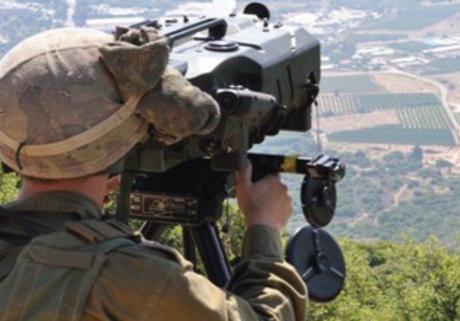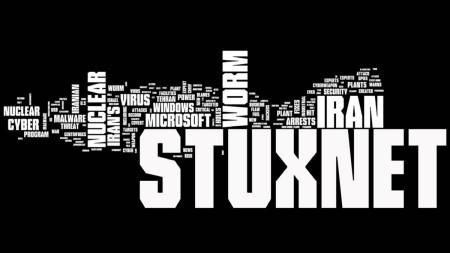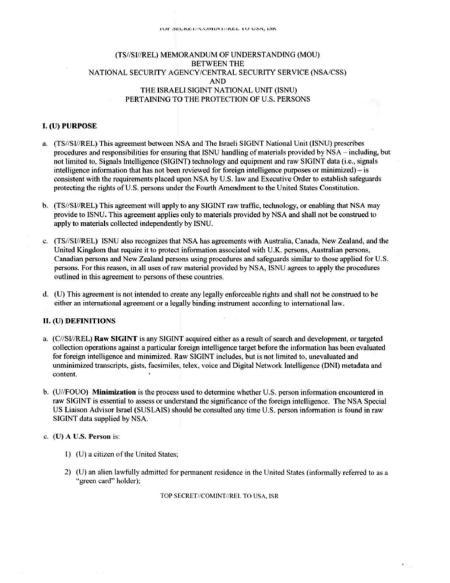The Israeli Intelligence Community have been first in the spy game for decades. Today it includes three main members: Military Intelligence Directorate aka Aman (military intelligence branch of the Israeli Defense Forces), Mossad (overseas intelligence) and Shin Bet aka ISA aka “Shabak” (internal security) and two smaller units: The intelligence branch of the Israeli Police and The Centre for Political Research (the intelligence branch of the Ministry of Foreign Affairs). In addition there is National Security Council to evaluate global conditions according to overall intelligence, and preparing national and security responses and SIGINT service: this proposed service would supply all the other services with SIGINT intelligence.
 Recent years Israel has took again steps forward to keep its superiority – qualitative edge – of Intelligence services in future too. Latest example about this development work is The Shahaf Combat Intelligence Collection battalion, which is responsible for collecting visual intelligence in the Lebanon sector, from the Mediterranean shore at Rosh-Hanikra to the foot of Mount Hermon.
Recent years Israel has took again steps forward to keep its superiority – qualitative edge – of Intelligence services in future too. Latest example about this development work is The Shahaf Combat Intelligence Collection battalion, which is responsible for collecting visual intelligence in the Lebanon sector, from the Mediterranean shore at Rosh-Hanikra to the foot of Mount Hermon.
Integrated Radar and MARS systems
Located in the Galilee region, The Shahaf Combat Intelligence Collection battalion employs surveillance operators, mobile surveillance resources and warfighters performing intelligence collection operations, if necessary, across the border as well. The battalion has a personnel of about 750 regular troopers and the capacity to grow by another 100 in an emergency.
According IsraelDefense the Radar systems introduced to the battalion in 2009 changed the world of intelligence collection. In the past, when optics reigned supreme, the surveillance operator would scan the sector. Such a scanning cycle took a few minutes to complete, which meant that each point within the sector was scanned once every few minutes, leaving space for Hezbollah to take advantage of. Today, Radars reign supreme as they enable continuous scanning of a given sector. This technology changed the operational concept of the battalion. Recently, Radars capable of seeing through foliage have been introduced, and they have improved ability to identify Hezbollah intrusion attempts and issue alerts.
Another intelligence collection element introduced to the Lebanon and Syria sector in recent years is the MARS surveillance system. According IsraelDefense this system consists of multiple surveillance cameras for different ranges and with different resolution characteristics, capable of monitoring a very broad sector. The optical system is integrated with the Radar, and when the Radar spots something, the optical system is alerted and takes up the monitoring process. The MARS surveillance system was yet another factor that contributed to the improved effectiveness of the battalion’s intelligence collection work. Instead of having each surveillance camera operated by a team of six surveillance operators in shifts, the MARS system makes it possible for a single surveillance operator to control multiple sensors simultaneously.

Intelligence in Context
In order to bridge the existing gaps, the IDF employs other surveillance resources from the air which, in combination with the combat intelligence collection setup, provide a unified status picture.
According IsraelDefense ‘Intelligence in Context’ is an intelligence collection concept that integrates an extensive range of resources and that integration makes it possible to overcome the weaknesses of each resource individually. Another advantage of this operational concept is the ability to focus on relevant collection. Instead of starting to search one house after another within the town of Bint Jbeil to find out what Hezbollah are doing, the context, namely – the integration with other intelligence sources, enables the battalion to focus. The field forces do not always know where the information had come from, owing to compartmentalization reasons, but that information guides field forces to ‘look over there’. This improves the effectiveness of the battalion’s capabilities by orders of magnitude.”
One of the challenges of collecting intelligence opposite Hezbollah involves the other side’s competence. “The enemy is smart,” says Lt. Col. Tomer Meltzman, the commander of The Shahaf Combat Intelligence Collection battalion. “Hezbollah are fully aware of the fact that we are watching them, and the troopers of the battalion keep asking themselves whether what they see through the lens should be taken at face value. The procedure for writing mission reports at the battalion includes facts, interpretation and recommendations. The facts are what you see, backed up by visual evidence. The context is the interpretation of what you see, and the recommendations are the combination of facts and insights. The question each team member asks himself with regard to Hezbollah is this: ‘Does what I see truly reflect whatever actually happens’?
“All of the collection reports from all of the companies are routed to me, and a dialog is under way with the collection teams around the question of what Hezbollah are doing or what they are planning. As in the Lebanon sector the issue of information security is observed very strictly compared to other sectors, compartmentalization is implemented even between the individual companies and teams within the battalion. Consequently, one team may see something and come up with a certain interpretation for the local event in its sector, but at the battalion commander’s level, that interpretation is integrated to form a more complete collection picture. Although information security and compartmentalization are intended to safeguard operational activities, they present a serious challenge as far as the implementation of the ‘Intelligence in Context’ concept is concerned.”
All of these compel the IDF to employ creative techno-operational thinking so as to maintain the advantage embodied in intelligence collection from within Israel or through the use of the Lebanese airspace. “We operate on two levels: we meet periodically with the relevant industries on the ground, in order to germinate new ideas that would solve operational problems. Additionally, we keep track of civilian technologies that may contribute to us,” says Meltzman.
Another field is understanding the context of the target in real time. “While to this day we have had Radars and optical systems, the next leap will involve the identification of the context of the target. When you spot an individual on the other side of the border, you want to know who he is, whether the Israeli intelligence community has a record for him, whether he is new to the sector and whether he is connected to other individuals in the sector. The ability to analyze such information in real time can shorten the loop closure processes for the targets we spot.” says Meltzman.
Source: IsraelDefense

Upper Level developments
The issue regarding the suitable structure of the Israeli Intelligence Community (IIC), and questions as to dividing responsibilities and jurisdictions between Aman, Shin Bet, and Mossad, became agenda issues many times in the past. The Commission to investigate the intelligence network following the War in Iraq maintained that, it is finally time to restructure the IIC in accordance with a proper work distribution, professional designation, as well as a correct constitutional and legal frame of reference.
According WikiPedia the Commission recommended on reforming the current IIC structure, ending up with three or four independent intelligence services, alongside the National Security Council, with the distinction between them being based upon the respective spheres of responsibility of each service:
¤ Aman (IDF): its jurisdiction is to consist primarily of “military intelligence”—alerting the political leadership and the security arms to the possibility of war and estimating the means of the enemy, and identifying prospective targets during a war or a limited military conflict.
¤ Mossad: is to be charged with, in addition to foiling attacks, a strategic-political emphasis, which includes evaluating the stability of regimes, and engaging in industrial-scientific-technological and nuclear-related intelligence as well as against global terrorism.
¤ Shabak: is to be tasked with the security of the State, its citizens, and organs, against Palestinian and other forms of terrorism, and against internal subversion.
¤ National Security Council: is to evaluate global conditions according to overall intelligence, and preparing national and security responses.
¤ SIGINT service: this proposed service would supply all the other services with SIGINT intelligence.
As the result of the process known as the Arab Spring and of a dramatic technological revolution, Aman, Mossad and ISA have recently undergone far-reaching changes. For example in the IDF Military Intelligence Directorate, where almost 1,000 officers changed positions and the organizational structure has been revolutionized.
A senior intelligence officer interviewed in IsraelDefense concludes the background of this massive wave of changes in Aman:
“In the era of the Internet and the social networks, events take place at a mind-boggling pace. Processes that once took years are now being concluded within days and even hours. However, beyond the regional instability, the really fateful change, as far as the intelligence agencies are concerned, has been a technological one. In the past, the primary intelligence effort was SigInt (Signals Intelligence, based on the spotting of electronic signals and monitoring of radio communication networks and telephone lines). Today, no one uses telephones or radio transceivers anymore. The enemy has evolved into an entity that is usually amorphous, with no definite chain of command, and each independent intelligence objective keeps a number of different cellular telephones which it uses to send written messages through E-Mail, the social networks and WhatsApp, or uses the Internet-based Skype network that offers basic encryption capabilities. The entire concept and all of the resources should be revised in order to keep on collecting SigInt in this day and age, and that is only one example of the change.”
” Generally, the intelligence community must adapt itself and provide real-time information about Jihad organizations and arms transfers, but also about enemy targets in caves and in urban areas – so that the information may be handed over promptly and the targets may be ‘treated’ by precision-guided munitions. IDF Military Intelligence Directorate also led a comprehensive program known as IBW (Intelligence Based Warfare), whose objective was to deliver tactical intelligence all the way down to the tactical echelon, namely – the platoon engaged in combat on the ground.”
According IsraelDefense substantial organizational changes have taken place within the other intelligence agencies of the State of Israel, ISA (Israel Security Agency) and Mossad.
At ISA, the most important, most significant change was concluded last year and included a substantial reinforcement of the cyber activities in the context of a cyber-SigInt division. ISA had recruited extensively for its cyber activities, and is currently regarded as one of the leading agencies in this field – as it is the agency in charge of securing all national infrastructure and utility systems.

The Mossad has also adapted itself to the era of cyber warfare. The world media attributed numerous cyber warfare operations to this agency, including the attack against the Iranian nuclear reactors using the Stuxnet computer virus. One thing is certain, though: the relations between Israel’s three intelligence agencies – the IDF Military Intelligence Directorate, ISA and Mossad – are the best ever.
Trivia 1:
The Israeli Defense Forces’ Secretive Unit 9900, which specializes in deciphering “visual intelligence,” now has 100 autistic volunteers so far. Autistic soldiers have special skills deciphering intelligence photos–and benefit from the chance to use those skills. Afterwards, the military helps them find jobs in the civilian world. Source: JewishNewsSyndicate
Trivia 2:

Trivia 3:

Trivia 4:

Black Cube is a private intelligence agency, which is based in London, Paris and Tel Aviv. The company was founded in 2010 by former Israeli intelligence officers Dan Zorella and Avi Yanus. Its employees include former members of Israeli intelligence units, including Aman, Mossad and Shin Bet, as well as legal and financial experts. Black Cube’s main business is “litigation support”, in which the company provides intelligence, evidence and advisory services in multi-jurisdictional legal and criminal cases.
Advertisements
